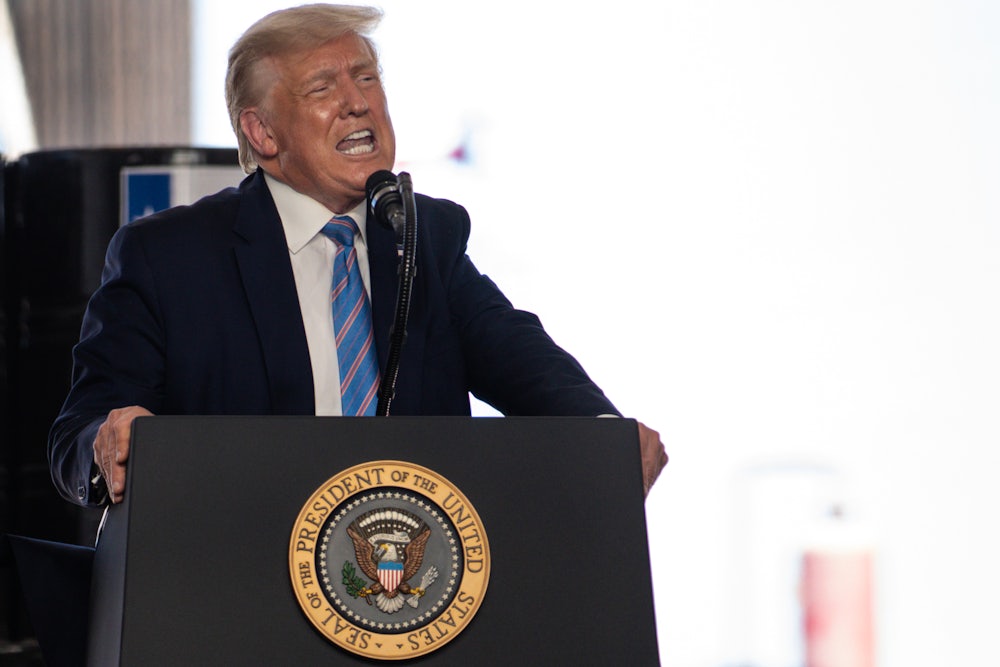The Trump administration is officially opening the Arctic National Wildlife Refuge, or ANWR, for business. That’s self-evidently bad for the climate; developed oilfields there stand to release some 4.3 billion tons of carbon dioxide into the atmosphere. It’s also the latest in a long line of ham-fisted ways Republicans have sought to boost fossil fuel development. In the past few months, Trump officials have seemed more eager than usual to score points against the climate and environmental movement before the uncertainty of the November election. Yet while “drill, baby, drill” may be the GOP’s twenty-first-century rallying cry, the oil industry itself has good reason to be more cautious. It’s the latest sign that we may be at a tipping point in energy politics: Rather than calculated advocacy on behalf of polluters, U.S. fossil fuel policy is starting to look more like a front in a culture war threatening the very interests it claims to serve.
Starting as soon as the end of this year, the Department of Interior will auction off two leases totaling 800,000 acres along the Coastal Plane in Northern Alaska, the development of which will entail massive infrastructure projects including well pads, pipelines, 175 miles of roads, and four airstrips. Drilling is estimated to start in eight years. The announcement, Interior Secretary David Bernhardt told The Wall Street Journal, follows a provision snuck into the Tax Cuts and Jobs Act of 2017, instructing the federal government to lease land in the ANWR to fossil fuel companies. Drilling there, he said, could continue on for the next half-century.
Arctic exploration and production have long been opposed by environmentalists and indigenous peoples including the Gwich’in, who hunt the caribou that migrate through the reserve. But as the fossil fuel market has changed, oil companies themselves—and their financiers on Wall Street—have turned on Arctic drilling, too. “ANWR leasing will test industry willingness to commit capital in size when investors are asking for spending discipline and a fast cash turn. Arctic development is neither of those things,” Clearview Energy Partners analyst Kevin Book told the Financial Times following Bernhardt’s announcement.
Major drillers started walking away from the Arctic years ago. Shell sold off its assets in Alaska after the last oil price crash in 2015, and BP followed suit last summer, selling its $5.6 billion in upstream and midstream Alaskan assets to Hilcorp Energy. Together, Hilcorp and ConocoPhilips now control 72 percent of increasingly concentrated Alaskan production, according to the consultancy Wood Mackenzie. Adding to this trend, several major banks have also refused to finance drilling in the Arctic in the last several years, including JPMorgan Chase, Goldman Sachs, and Deutsche Bank. For Wall Street, it was low-hanging fruit to appease critics raising climate, environmental, and indigenous sovereignty concerns: It’s a bad investment anyway.
As The New Republic has repeatedly pointed out, fossil fuels have become a markedly worse bet over the past decade. With traditional and cheaper-to-access reserves running low, high-cost unconventional drilling—including shale and Arctic production—was made possible largely by the low interest rates put in place after the last recession, which made it possible for companies to take on debt to finance the costly extractive projects that drove the shale boom. Investors were already losing patience after those firms’ years of unprofitability when pandemic shut-downs kneecapped gas demand, wreaking havoc in the notoriously over-leveraged U.S. shale sector. Break-even costs are even higher in the Arctic than they are in the shale patch, which has seen a historic wave of bankruptcies that are on pace to continue if prices continue to float around $40 per barrel.
In that context, Trump’s White House is administering some truly strange medicine to its favorite industry. For drillers, the problem is less that they lack access to new lands for extraction than that prices are too low to make that extraction remotely profitable, particularly in harsh and icy conditions like those found along Alaska’s North Slope. As producers buckle under the weight of collapsing demand for fossil fuels, the GOP is doing everything in its power to ramp up supply, rushing to flood global markets with new fuel that’s getting increasingly hard to sell. Demand is expected to recover somewhat as economies reopen, but the fact remains that OPEC and Russia (“OPEC+”) are controlling the spigots that shape oil market and in doing so can drive fuel prices down low enough to put high-cost producers out of business. That could easily torpedo a U.S. fossil fuel sector where individual producers attempt to drill as quickly as possible. Regulators have been unwilling to intervene to keep companies’ own drive for short-term profits from working against the industry’s collective best interests. So long as the Trump White House tries to keep U.S. taps flowing faster in the name of energy dominance, it won’t just be irreparably damaging Alaskan wilderness, indigenous livelihoods, and global climate goals; it will be doing so while undercutting the very companies it’s trying to prop up.
